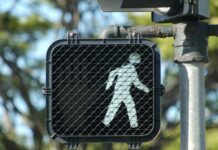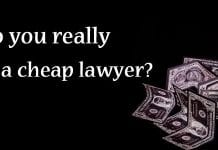How to vacate a judgment in California is the topic of this article. This article will discuss four of the most common methods by which a default or judgment can be vacated in California.
DISCRETIONARY RELIEF UNDER CCP SECTION 473(b)
The first and most well known method for vacating a default or judgment is filing a motion to vacate under Code of Civil Procedure section 473(b) on the grounds of mistake, inadvertance, surprise or excusable neglect.
This is the most commonly used method for vacating a default or judgment in California. California Code of Civil Procedure § 473(b) states in pertinent part that:
“The Court may, upon any terms as may be just, relieve a party, or his or her legal representative from a judgment, dismissal, order or other proceeding, taken against him or her through his or her mistake, inadvertance, surprise or excusable neglect. Application for this relief shall be accompanied by a copy of the answer or other pleading proposed to be filed therein, otherwise the application shall not be granted, and shall be made within a reasonable time, in no case exceeding six months, after the judgment, dismissal, order, or proceeding was taken.”
This motion is known as discretionary relief as the judge has the discretion to grant or deny the motion.
Note that the code section states that the motion must be made within a reasonable period of time and that six months is the deadline. This means that the moving party must act quickly. As a result of this requirement for action within a reasonable time, a moving party has the burden of showing that he or she acted diligently once learning of the judgment. Huh v. Wang (2007) 158 Cal.App.4th 1406, 1420. Whether a party acted diligently is a question of fact for the trial court. (Ibid.)
Another factor to consider is that the California courts have held that the six-month period runs from entry of default, not entry of judgment. See Manson, Iver & York v. Black (2009) 176 Cal.App.4th 36, 42.
A motion to vacate a default or judgment under section 473 is typically filed when a party has been served with a summons and complaint but failed to file a timely response due to a medical or family emergency or other similar situation. As every case is unique it is best to consult with an experienced attorney who can review the situation and determine the best course of action.
There are several requirements that the moving party must meet when filing a motion for discretionary relief under section 473. They must show that they: (1) timely moved the Court for relief from default, (2) make a sufficient showing of mistake, inadvertance, surprise or excusable neglect, (3) and provide a copy of their proposed pleading along with their motion, or file it as soon as possible before the hearing.
MANDATORY RELIEF UNDER CCP SECTION 473(b)
The second method of vacating a default or judgment in California is mandatory relief under Code of Civil Procedure section 473(b) using an attorney affidavit of fault.
Code of Civil Procedure section 473 states in pertinent part that,
“Notwithstanding any other requirements of this section, the court shall, whenever an application for relief is made no more than six months after entry of judgment, is in proper form, and is accompanied by an attorney’s sworn affidavit attesting to his or her mistake, inadvertence, surprise, or neglect, vacate any (1) resulting default entered by the clerk against his or her client, and which will result in entry of a default judgment, or (2) resulting default judgment or dismissal entered against his or her client, unless the court finds that the default or dismissal was not in fact caused by the attorney’s mistake, inadvertence, surprise, or neglect. The court shall, whenever relief is granted based on an attorney’s affidavit of fault, direct the attorney to pay reasonable compensatory legal fees and costs to opposing counsel or parties. However, this section shall not lengthen the time within which an action shall be brought to trial pursuant to Section 583.310.
(c) (1) Whenever the court grants relief from a default, default judgment, or dismissal based on any of the provisions of this section, the court may do any of the following:
(A) Impose a penalty of no greater than one thousand dollars ($1,000) upon an offending attorney or party.
(B) Direct that an offending attorney pay an amount no greater than one thousand dollars ($1,000) to the State Bar Client Security Fund.
(C) Grant other relief as is appropriate.
(2) However, where the court grants relief from a default or default judgment pursuant to this section based upon the affidavit of the defaulting party’s attorney attesting to the attorney’s mistake, inadvertence, surprise, or neglect, the relief shall not be made conditional upon the attorney’s payment of compensatory legal fees or costs or monetary penalties imposed by the court or upon compliance with other sanctions ordered by the court.”
Note that the judge cannot require that the attorney pay any of the costs or penalties as a condition of granting the relief.
The attorney affidavit of fault procedure differs in two major respects from the standard section 473 motion, (1) the six month deadline begins to run upon entry of judgment or dismissal, not when a default is entered, and (2) relief is mandatory, not discretionary as with a standard section 473 motion.
Where an “attorney affidavit of fault” is filed, there is no requirement that the attorney’s mistake, inadvertence, etc. be excusable meaning that relief must be granted even where the default resulted from inexcusable neglect by the defendant’s attorney, and the same rule applies to dismissals resulting from inexcusable neglect by the attorney. Further, the court is not concerned with the reasons for the attorney’s mistake.
The attorney affidavit of fault method can be very useful even if an attorney is hesitant to admit fault as it will avoid any possible malpractice claims by the client.
In order to use the attorney affidavit of fault method the attorney must sign the declaration. If you feel that your attorney was responsible for having a default or judgment entered against you contact an experienced attorney right away to discuss your situation.
RELIEF UNDER SECTION 473.5 FOR LACK OF ACTUAL NOTICE
Another method of vacating a judgment that is not as well known as a section 473 motion is a motion to vacate a default or judgment under California Code of Civil Procedure section 473.5 on the grounds that the service of the summons and complaint on the moving party did not result in actual notice in time to defend the lawsuit, and that their lack of actual notice was not caused by their avoidance of service or inexcusable neglect.
In the right situations, filing a motion under section 473.5 is very useful as the time limit for filing a motion under Section 473.5 is substantially longer than the six months allowed by Section 473. Some attorneys and other legal professionals are not aware of Section 473.5 and are under the impression that after six months there is nothing that can be done to vacate a default judgment.
California Code of Civil Procedure section 473.5 states in pertinent part that:
“When service of a summons has not resulted in actual notice to a party in time to defend the action and a default or default judgment has been entered against him or her in the action, he or she may serve and file a notice of motion to set aside the default or default judgment and for leave to defend the action. The notice of motion shall be served and filed within a reasonable time, but in no event exceeding the earlier of: (I) two years after entry of a default judgment against him or her; or (ii) 180 days after service on him or her of a written notice that the default or default judgment has been entered”, and “Upon a finding by the court that the motion was made within the period permitted by subdivision (a) and that his or her lack of actual notice in time to defend the action was not caused by his or her avoidance of service or inexcusable neglect, it may set aside the default or default judgment on whatever terms as may be just and allow the party to defend the action.”
A motion to vacate under section 473.5 is often filed when someone may not have received actual notice of a lawsuit, including situations where substitute service may have been used at an address at which that person no longer lives, someone may have forgotten to give the defendant the summons and complaint or a situation where service was done by publication.
MOTION TO VACATE VOID JUDGMENT UNDER SECTION 473(d)
Another little known method of vacating a default or judgment in California is filing a motion to vacate a judgment under the provisions of Code of Civil Procedure section 473(d) on the grounds that the default or judgment is void.
Code of Civil Procedure section 473(d) states that, “The court may, upon motion of the injured party, or its own motion, correct clerical mistakes in its judgment or orders as entered, so as to conform to the judgment or order directed, and may, on motion of either party after notice to the other party, set aside any void judgment or order.”
If a judgment is void there is no time limit to filing a motion to vacate under Code of Civil Procedure section 473(d).
It should be noted that a judgment or order must be considered void and not merely voidable to be vacated under Code of Civil Procedure section 473(d).
A judgment can be considered void as a matter of law for several reasons including, (1) lack of subject matter jurisdiction, (2) lack of personal jurisdiction, (3) lack of or improper service of summons, (4) default improperly entered, and (5) a default judgment exceeding the amount demanded in the complaint.
“A court can lack fundamental authority over the subject matter, question presented, or party, making its judgment void, or it can merely act in excess of its jurisdiction or defined power, rendering the judgment voidable.” In re Marriage of Goddard (2004) 33 Cal.4th 49, 56.
A judgment is void if the court lacked jurisdiction over the subject matter or parties, for example, if the defendant was not validly served with summons. Neumann v. Melgar (2004) 121 Cal.App.4th 152, 164.
Lack of or improper service of summons is generally the most common reason for a judgment to be void as a matter of law, particularly when the defendant has not been personally served as that would mean that they lacked any actual or constructive notice of the lawsuit.
This article has discussed the four most common methods of vacating a default or judgment in California. There are other methods of vacating a default or judgment that have not been discussed. Every situation is unique and if you have had a default or judgment entered against you contact an experienced attorney as soon as possible. The attorney can review your situation and advise you as to whether or not filing a motion to vacate the default or judgment is likely to succeed and which method has the best chance of succeeding.
Thank you for reading. I hope I could have been educational as I endeavor to provide my knowledge as a free public service. Please note that all the materials and information on this web site are general analyses made available for the public’s general informational purposes only. These analyses are not in any way intended to serve as specific legal advice to be applied in your particular situation. Although I am an attorney, absent a signed retention and engagement letter, I am not your attorney. There are no exceptions to this rule. Moreover, you shall not rely on the information I am providing you, as it is only for your general knowledge and educational purposes, since this information would likely change based on any additional facts. Thus the transmission and receipt of information on this web site by anyone does not form or constitute an attorney-client relationship. My knowledge of laws is limited to California. Anyone receiving any information on this web site should not act upon the information provided without first obtaining the services of professional legal counsel licensed in their respective jurisdiction. Best of luck.
Law Offices of Nathan Mubasher
2621 Green River Rd, Ste 105 PMB 403
Corona, CA 92882
tel 1-800-691-2721 | fax 1-310-356-3660
www.mubasherlaw.com





































